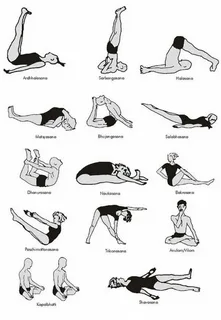In a world that constantly demands our attention, finding balance and connection within ourselves can often feel elusive. Enter Somatic Yoga—a transformative practice that combines the ancient wisdom of yoga with modern insights into body awareness and mindfulness. For beginners, Somatic Yoga offers a gentle yet profound way to enhance physical health, emotional well-being, and self-awareness. This guide will delve into the essence of Somatic Yoga, its benefits, how to get started, and answer some frequently asked questions to help you embark on this enriching journey.

What is Somatic Yoga?
Somatic Yoga is a contemporary approach to yoga that emphasizes the connection between the mind and body through heightened body awareness and mindful movement. The term “somatic” comes from the Greek word “soma,” meaning “body.” Somatic practices focus on internal experiences and sensations, aiming to cultivate a deeper understanding of how our bodies feel and function.
Unlike traditional yoga, which often concentrates on physical postures and alignment, Somatic Yoga prioritizes:
- Internal Sensations: It encourages practitioners to pay attention to their bodily experiences rather than focusing solely on external poses.
- Mindful Movement: Movements are slow, deliberate, and designed to enhance sensory awareness and relaxation.
- Breath Integration: Conscious breathing is used to support and deepen the practice, fostering a sense of calm and connection.
Core Principles of Somatic Yoga
1. Body Awareness
Somatic Yoga is all about tuning into the body’s internal signals. This practice helps individuals become more aware of their physical sensations, which can lead to improved posture, flexibility, and overall body comfort. By focusing on how movements feel, you gain a better understanding of your body’s needs and responses.
2. Mindful Movement
In Somatic Yoga, movements are performed with mindfulness and intention. Unlike more vigorous forms of exercise, the movements in Somatic Yoga are slow and gentle, aimed at exploring and releasing tension within the body. This approach helps to create a deeper connection with oneself and promotes relaxation.
3. Breath Integration
Breath plays a crucial role in Somatic Yoga. Conscious breathing helps to synchronize with movements, enhancing the overall experience of the practice. Breathwork not only supports physical movement but also aids in calming the mind and regulating emotions.
4. Emotional Awareness
Somatic Yoga encourages awareness of how emotions are held and experienced in the body. By recognizing physical manifestations of emotional states, practitioners can begin to process and release stored emotional tension, leading to improved emotional health and resilience.
5. Relaxation and Stress Reduction
One of the primary goals of Somatic Yoga is to activate the body’s relaxation response. Through mindful movements and breathwork, the practice helps reduce stress, calm the nervous system, and promote a sense of overall well-being.
Benefits of Somatic Yoga
1. Enhanced Body Awareness
By focusing on internal sensations, Somatic Yoga helps you develop a better understanding of your body’s needs. This increased awareness can lead to improved posture, flexibility, and overall physical comfort.
2. Stress Reduction
The gentle and mindful nature of Somatic Yoga promotes relaxation by activating the parasympathetic nervous system. This can help lower stress levels, reduce anxiety, and create a sense of calm.
3. Emotional Balance
Somatic Yoga aids in processing and releasing emotional tension stored in the body. This can lead to better emotional regulation, increased self-awareness, and improved overall emotional health.
4. Pain Relief
For those dealing with chronic pain or tension, Somatic Yoga offers a way to alleviate discomfort through gentle movement and relaxation. The practice helps release muscle tension and improve overall physical comfort.
5. Improved Mindfulness
Integrating mindfulness techniques into your practice enhances your ability to stay present and focused. This can improve mental clarity, emotional stability, and overall quality of life.
How to Start Practicing Somatic Yoga
1. Choose a Comfortable Space
Find a quiet, comfortable space where you can practice without interruptions. Ensure the area is free of distractions and has enough room for movement.
2. Wear Comfortable Clothing
Opt for loose-fitting, breathable clothing that allows for freedom of movement. Avoid tight or restrictive garments that may hinder your practice.
3. Begin with Gentle Movements
Start with simple, gentle movements to help you connect with your body. Focus on how each movement feels and adjust as needed to maintain comfort and ease.
4. Incorporate Breathwork
Integrate conscious breathing into your practice. Pay attention to your breath and use it to guide your movements and enhance relaxation.
5. Practice Mindfulness
Incorporate mindfulness techniques such as meditation or body scans. This helps you stay present and fully engage with your practice.
6. Listen to Your Body
Pay attention to your body’s signals throughout the practice. Adjust movements and intensity based on how you feel to ensure a safe and effective practice.

FAQs:
1. What is the difference between Somatic Yoga and traditional yoga?
Somatic Yoga focuses on internal body awareness and mindfulness, while traditional yoga often emphasizes physical postures and alignment. Somatic Yoga uses gentle, mindful movements and breathwork to enhance the mind-body connection, whereas traditional yoga may prioritize external goals and physical challenges.
2. Do I need prior yoga experience to start Somatic Yoga?
No, Somatic Yoga is accessible to beginners as well as experienced practitioners. The practice is designed to be gentle and adaptable, making it suitable for individuals new to yoga.
3. How often should I practice Somatic Yoga to see benefits?
Practicing Somatic Yoga a few times a week can help you experience its benefits. Consistency is key, and even short, regular sessions can lead to noticeable improvements in body awareness and relaxation.
4. Can Somatic Yoga help with specific physical conditions or injuries?
Somatic Yoga can be beneficial for managing certain physical conditions and injuries by promoting relaxation and reducing muscle tension. However, it is important to consult with a healthcare provider or a qualified yoga therapist to ensure the practice is appropriate for your specific condition.
5. What should I expect during a Somatic Yoga session?
A Somatic Yoga session typically includes gentle, mindful movements, breathwork, and relaxation techniques. Expect a focus on body awareness and sensory experience rather than challenging poses or intense physical exertion.
6. Can Somatic Yoga be combined with other forms of exercise?
Yes, Somatic Yoga can complement other forms of exercise by enhancing body awareness and promoting relaxation. It can be integrated into a well-rounded fitness routine to support overall health and well-being.
7. Are there any specific breathing techniques used in Somatic Yoga?
Somatic Yoga incorporates various breathing techniques, such as deep diaphragmatic breathing and paced breathing. These techniques help regulate the nervous system, support relaxation, and enhance the overall practice.
